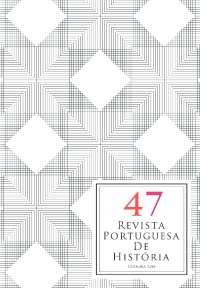Please use this identifier to cite or link to this item:
https://hdl.handle.net/10316.2/40665| Title: | O quotidiano na clausura feminina eborense e a presença de população escrava: a fronteira entre o servir das portas adentro e das portas afora no período moderno | Other Titles: | Everyday life in female religious communities in Évora and the presence of slaves: the boundary between the in-house and outdoor service in modern period | Authors: | Conde, Antónia Fialho | Keywords: | Slave population;female religious communities;Évora;modern period;População escrava;comunidades religiosas femininas;Évora;período moderno | Issue Date: | 2016 | Publisher: | Imprensa da Universidade de Coimbra | Abstract: | Apesar da existência de anteriores estudos, tanto em termos nacionais como regionais, e que demonstram a forte presença de escravos em Évora nos séculos XV e XVI, localizar a população escrava na documentação de instituições religiosas femininas da cidade e entender a sua condição de vida nessas comunidades não se revela fácil. Muitas das referências à sua existência são indiretas, ao fazerem parte de um dote ou doação (constando como bens a que se atribui um determinado valor), que podia ser testamentária, de partilhas e sentenças. São também de difícil perceção as tarefas desempenhadas no quotidiano de espaços claustrais, especialmente os femininos, sujeitos às exigências pós-tridentinas. Só com a apresentação de alguns casos, a juntar aos já conhecidos, poderemos sugerir algumas considerações sobre esta matéria. Despite the existence of previous studies, both national and regional, studies that demonstrate a strong presence of slaves in Évora in the 15th and 16th centuries, locating them in documents from the city’s female religious communities and understanding their living conditions in those communities is not an easy task. Many of the references to their existence are indirect and related to a dowry or donation (being mentioned as assets with an assigned value), which could be associated with a will, a partition or a sentence. It is also difficult to ascertain the tasks they performed in the everyday life of cloistered communities, particularly the female ones, subject to the post-Tridentine requirements. Only by presenting a series of cases, other than the ones that are already known, will we be able to suggest considerations on this matter. |
URI: | https://hdl.handle.net/10316.2/40665 | ISSN: | 0870-4147 2183-3796 (digital) |
DOI: | 10.14195/0870-4147_47_2 | Rights: | open access |
| Appears in Collections: | Revista Portuguesa de História |
Files in This Item:
| File | Description | Size | Format | |
|---|---|---|---|---|
| o_quotidiano_na_clausura_feminina_eborense_e_a_presenca_de_populacao_escrava.pdf | 532.16 kB | Adobe PDF |  |
Items in DSpace are protected by copyright, with all rights reserved, unless otherwise indicated.
